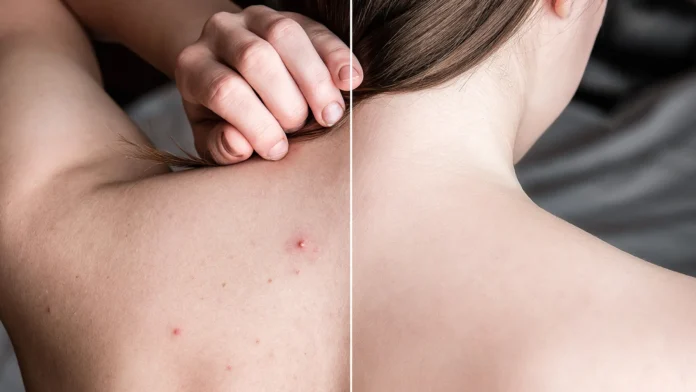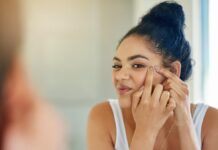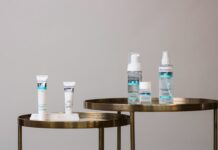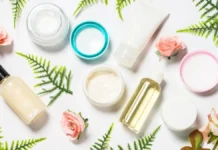Table of Contents
Body acne can be a frustrating and embarrassing problem, but it’s more common than you might think. Just like facial acne, body acne occurs when hair follicles get clogged with oil, dead skin cells, and bacteria. This can lead to pimples, blackheads, whiteheads, or even cysts. However, with the right products and a consistent routine, you can treat and prevent body acne effectively. Here’s a comprehensive guide on how to manage body acne using the right products.
Understanding Body Acne
Before diving into treatment, it’s essential to understand what causes body acne. Common areas for body acne include the back, chest, and shoulders due to the high concentration of sebaceous (oil) glands in these areas. Several factors contribute to body acne, including:
- Hormonal Changes: Fluctuations in hormones, especially during puberty, pregnancy, or menstruation, can increase oil production.
- Sweat and Friction: Sweat mixed with friction from clothing or sports equipment can clog pores.
- Diet: High-sugar or high-dairy diets can sometimes contribute to acne.
- Genetics: A family history of acne can increase your likelihood of developing it.
- Poor Hygiene: Not showering after sweating or using dirty clothing can exacerbate acne.
Step-by-Step Guide to Treating and Preventing Body Acne
1. Choose the Right Cleanser
A good cleanser is the foundation of your acne-fighting routine.
- Salicylic Acid Cleanser: This is a beta hydroxy acid (BHA) that helps to exfoliate the skin and clear out pores. Use a salicylic acid body wash once a day, preferably in the shower.
- Benzoyl Peroxide Cleanser: Benzoyl peroxide is another effective ingredient that kills bacteria causing acne. A 5% benzoyl peroxide body wash can be used to treat existing acne and prevent new breakouts.
How to Use: Lather the cleanser on the affected areas and leave it on for a minute or two before rinsing off. This allows the active ingredients to penetrate the skin.
2. Exfoliate Regularly
Exfoliation helps remove dead skin cells that can clog pores.
- Physical Exfoliants: Use a gentle body scrub with fine granules to exfoliate the skin 2-3 times a week. Avoid harsh scrubs that can irritate the skin and worsen acne.
- Chemical Exfoliants: Products containing alpha hydroxy acids (AHAs) like glycolic acid or lactic acid can help in dissolving dead skin cells. Look for a body lotion or treatment with these ingredients.
How to Use: Apply the exfoliant in gentle, circular motions. Be careful not to over-exfoliate as it can irritate the skin and worsen acne.
3. Moisturize with Non-Comedogenic Products
Moisturizing is crucial, even if you have acne-prone skin.
- Oil-Free Moisturizers: Look for non-comedogenic (won’t clog pores) and oil-free body lotions. Ingredients like hyaluronic acid can provide hydration without causing breakouts.
- Aloe Vera Gel: Aloe vera has soothing properties and can help reduce inflammation and redness associated with acne.
How to Use: Apply moisturizer after showering while your skin is still damp to lock in moisture.
4. Spot Treatments
Target stubborn pimples with spot treatments.
- Benzoyl Peroxide Gel: A 2.5% benzoyl peroxide gel can be applied directly to pimples to reduce bacteria and inflammation.
- Salicylic Acid Treatments: Use a salicylic acid spot treatment to help clear clogged pores and reduce swelling.
How to Use: Apply a small amount of the treatment directly on the pimples after cleansing and before moisturizing.
5. Shower After Sweating
Sweat can contribute to body acne, so it’s important to shower after any activity that makes you sweat.
- Immediate Showering: Try to shower as soon as possible after sweating to prevent sweat from clogging your pores.
- Use Antibacterial Soap: Consider using an antibacterial body wash to reduce the amount of bacteria on your skin.
6. Wear Breathable Clothing
Tight or non-breathable clothing can trap sweat and oil, leading to acne.
- Choose Cotton: Wear loose-fitting, cotton clothing that allows your skin to breathe.
- Avoid Synthetic Fabrics: Synthetic materials can trap heat and moisture, creating an environment where acne can thrive.
7. Keep Bedding Clean
Dirty sheets and pillowcases can harbor bacteria and oil.
- Regular Washing: Wash your bedding, especially pillowcases, at least once a week.
- Use Fragrance-Free Detergents: Choose mild, fragrance-free detergents to avoid irritating your skin.
8. Healthy Diet and Hydration
What you eat and drink can impact your skin’s health.
- Balanced Diet: Incorporate more fruits, vegetables, and whole grains into your diet. Reduce consumption of sugary and high-dairy foods.
- Stay Hydrated: Drink plenty of water to help flush out toxins from your body.
9. Consult a Dermatologist
If over-the-counter products aren’t working, it may be time to see a professional.
- Prescription Treatments: A dermatologist can prescribe stronger medications like retinoids or oral antibiotics if necessary.
- Professional Advice: They can provide personalized recommendations based on your skin type and the severity of your acne.
Recommended Products for Body Acne
Cleanser
- Neutrogena Body Clear Body Wash: Contains salicylic acid to help treat and prevent acne.
- PanOxyl Acne Foaming Wash: Contains 10% benzoyl peroxide for more severe acne.
Exfoliator
- CeraVe SA Body Wash: Contains salicylic acid for gentle exfoliation.
- Glytone Exfoliating Body Wash: Contains glycolic acid for chemical exfoliation.
Moisturizer
- Aveeno Daily Moisturizing Lotion: Non-comedogenic and suitable for daily use.
- Neutrogena Hydro Boost Water Gel: Contains hyaluronic acid for lightweight hydration.
Spot Treatment
- Clean & Clear Advantage Acne Spot Treatment: Contains salicylic acid.
- Differin Gel: Contains adapalene, a type of retinoid, for treating acne.
Natural Remedies for Body Acne
Tea Tree Oil
- Antibacterial Properties: Tea tree oil has natural antibacterial properties that can help reduce acne.
- How to Use: Dilute tea tree oil with a carrier oil (like coconut oil) and apply it to the affected areas.
Apple Cider Vinegar
- Exfoliating and Antimicrobial: Apple cider vinegar can help exfoliate the skin and kill acne-causing bacteria.
- How to Use: Dilute with water and use as a toner after showering.
Honey
- Anti-inflammatory and Antibacterial: Honey can soothe the skin and reduce acne.
- How to Use: Apply raw honey directly to the acne-affected areas and leave it on for 10-15 minutes before rinsing.
Conclusion
Treating and preventing body acne requires a consistent skincare routine and the right products. Start with a good cleanser, exfoliate regularly, moisturize with non-comedogenic products, and use spot treatments as needed. Shower after sweating, wear breathable clothing, and keep your bedding clean. Additionally, maintaining a healthy diet and staying hydrated can contribute to clearer skin. If over-the-counter treatments don’t work, don’t hesitate to consult a dermatologist for professional advice. With the right approach, you can effectively manage and prevent body acne, leading to clearer and healthier skin.





